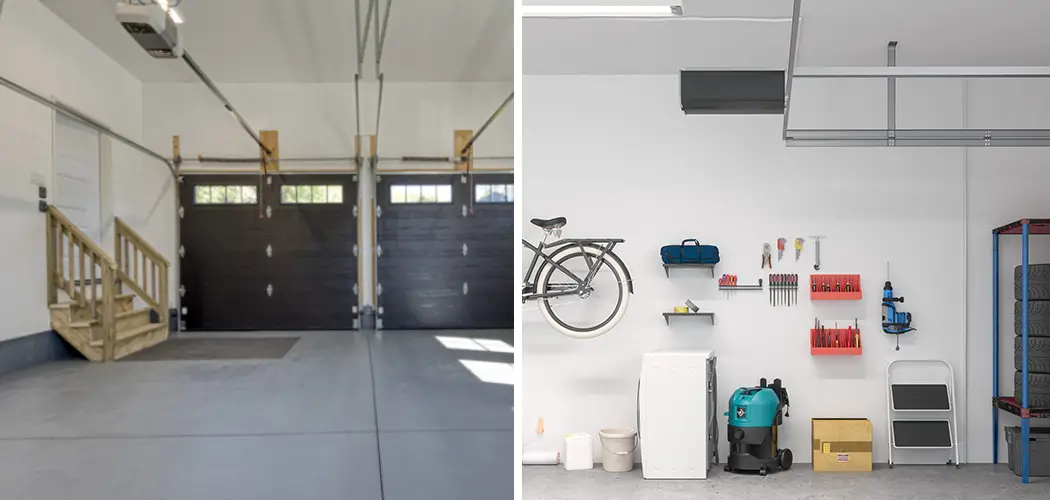Water damage is a common problem that homeowners face, especially in areas such as the garage where moisture and humidity levels are high. This can lead to mold growth, rotting drywall, and other structural issues. That’s why it’s important to know to waterproof drywall in garage areas.
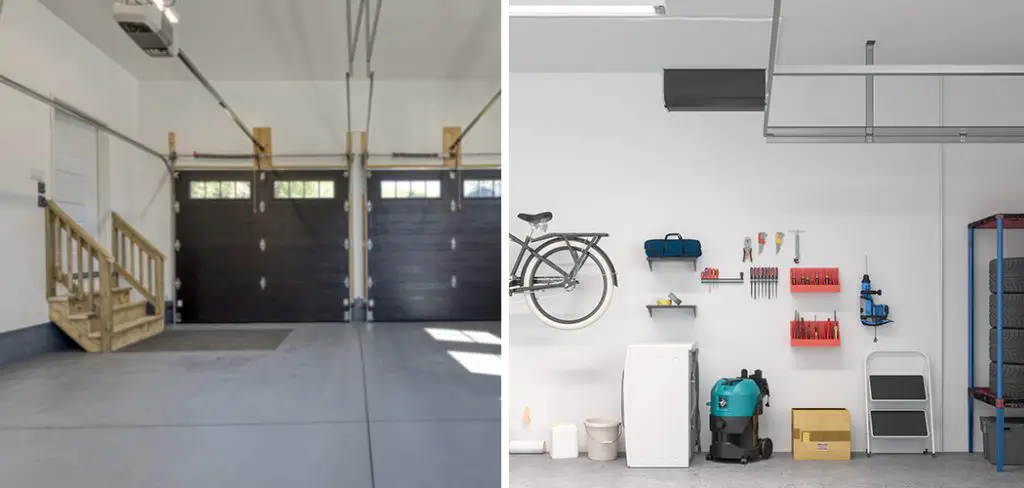
The main advantages of knowing to waterproof drywall in garage are the protection it offers against moisture and mold, as well as the ability to extend the lifespan of your garage walls. With proper waterproofing, you can prevent water damage and structural issues that can be costly to fix.
One of the top reasons to waterproof drywall in your garage is to protect it from moisture. Garages are often damp and humid environments, especially if they are not properly ventilated. In this blog post, You will learn in detail how to waterproof drywall in garage.
Step by Step Processes for How to Waterproof Drywall in Garage
Step 1: Inspect the Drywall
Before you apply any waterproofing product, it’s important to thoroughly inspect your drywall for any signs of damage or deterioration. Look out for cracks, holes, or mold growth as these issues need to be fixed before proceeding with the waterproofing process.
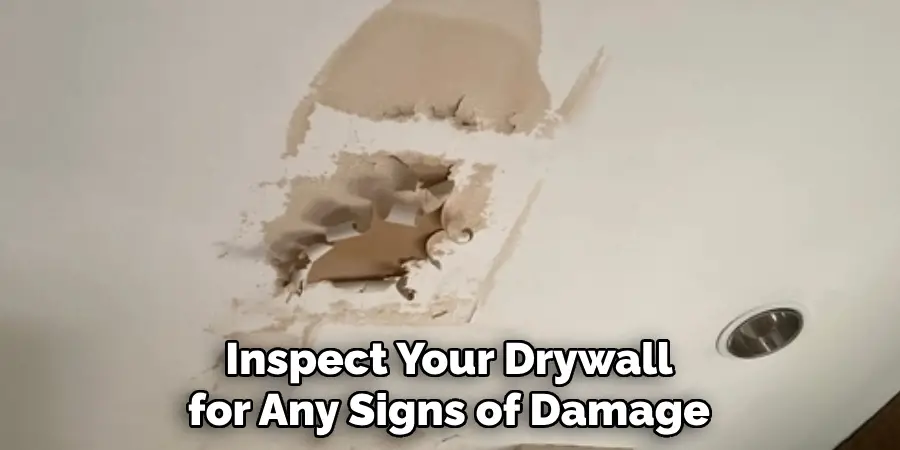
Step 2: Prep the Surface
The key to a successful waterproofing job is proper preparation. This includes removing any loose paint, dust or debris from the surface of the drywall. You can use a stiff brush or sandpaper for this step.
To protect your electrical outlets and fixtures from getting damaged by water or waterproofing products, cover them with plastic sheeting and secure it with masking tape. Make sure all the outlets and fixtures are completely covered before moving on to the next step.
Step 3: Choose a Waterproofing Product
There are several types of waterproofing products available in the market, such as sealants, paints, and membranes. Depending on your budget and the severity of your moisture problem, choose a product that best suits your needs.
Before you apply the waterproofing product, it’s important to prime the drywall. This will help the product adhere better and provide a smoother finish. You can use a water-based primer for this step.
Step 4: Mix the Waterproofing Product
If you’re using a liquid waterproofing product, make sure to read and follow the manufacturer’s instructions carefully. Mix the product as directed and make sure it’s well blended before proceeding with the application.
Using a brush, roller or sprayer, apply the waterproofing product onto the drywall surface. Make sure to cover every inch of the drywall evenly for maximum protection against moisture.
Step 5: Let it Dry
Depending on the type of waterproofing product you’re using, it may take a few hours or even days for it to completely dry. Follow the specific instructions on the product label and make sure to allow enough drying time before applying another coat.
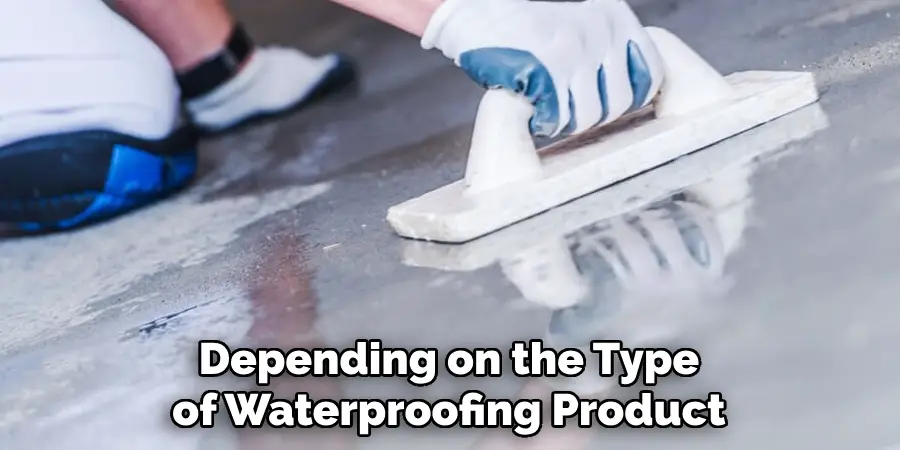
For added protection, you may need to apply multiple coats of waterproofing product. Make sure each coat is completely dry before applying the next one. Check the product label for recommended number of coats.
Step 6: Maintain Regular Inspections
Once you’ve successfully waterproofed your drywall, it’s important to regularly inspect it for any signs of moisture or damage. This will help prevent any future problems and ensure that your garage remains free from water damage.
Tips for How to Waterproof Drywall in Garage
- Wear protective gear such as gloves, goggles, and a mask before starting the waterproofing process.
- Make sure the room is well ventilated to prevent inhaling any harmful chemicals.
- Keep pets and children away from the work area during the waterproofing process.
- Use caution when handling tools and materials to avoid injury.
- Read all instructions on waterproofing products carefully before use.
- Test a small area of the drywall before waterproofing the entire garage to ensure desired results.
- In case of any spills or accidents, have a first aid kit readily available.
Waterproofing drywall in your garage is an important step to protect your walls and prevent any damage from moisture.
What Are the Benefits of Waterproofing Drywall in a Garage?
Besides preventing water damage, waterproofing drywall in your garage can provide other benefits.
- It can increase the lifespan of your walls by protecting them from moisture and mold growth.
- Waterproofing can also improve the overall aesthetic of your garage walls.
- By reducing moisture, it can help prevent musty odors and maintain a clean and fresh smell in your garage.
- This process can also make it easier to clean any spills or stains on the walls.
- In case of flooding or water leaks, waterproofed drywall will be more resistant and prevent major damage to your garage.

Overall, waterproofing your drywall in the garage not only protects your walls but also adds value to your property.
How Often Should You Reapply Waterproofing to Maintain Its Effectiveness?
Waterproofing drywall in your garage is an essential step to prevent water damage and mold growth. However, the effectiveness of waterproofing can decrease over time due to wear and tear or exposure to harsh elements.
So, how often should you reapply waterproofing to maintain its effectiveness? The answer depends on various factors such as the type of waterproofing material used, the level of exposure to moisture, and the overall condition of your garage.
In general, it is recommended to reapply waterproofing every 3-5 years for optimal protection. However, if your garage is constantly exposed to high levels of moisture or extreme weather conditions, you may need to reapply more frequently.
Regular inspections can also help determine when it is time to reapply waterproofing. If you notice any signs of water damage, such as discoloration or peeling paint, it is a clear indication that the waterproofing has worn off and needs to be reapplied.
Is There a Difference Between Waterproofing Drywall in a Garage Vs Other Areas of the House?
When it comes to waterproofing drywall, the process may differ depending on the area of the house. This is because different areas are exposed to varying levels of moisture and humidity.
For instance, when waterproofing in a garage, there are specific considerations that need to be taken into account. One key factor is that garages tend to have higher humidity levels compared to other areas of the house.
This is due to factors such as lack of ventilation and constant exposure to outdoor elements. As a result, regular drywall may not hold up well in garage conditions and can easily become damaged by moisture. To effectively waterproof drywall in a garage, there are certain steps you can follow.
First, it is important to properly seal any cracks or gaps in the walls with caulk. This will prevent water from seeping through and causing damage. Next, you can apply a waterproofing membrane or paint specifically designed for high humidity areas like garages.
Importance of How to Waterproof Drywall in Garage
1. Protection from Moisture Damage
As mentioned earlier, garages are subjected to high levels of moisture which can cause damage to regular drywall. By waterproofing the walls, you are ensuring that they are adequately protected against any potential water damage.
2. Prevent Mold and Mildew Growth
Excess moisture can also lead to the growth of mold and mildew, creating an unhealthy environment in your garage. Waterproofing the drywall helps to prevent this, as mold and mildew need moisture to thrive.
3. Extend the Lifespan of Your Drywall
Regular drywall is not designed for high humidity levels and can easily become damaged if exposed to moisture over time. Waterproofing can significantly extend the lifespan of your drywall, saving you money on future repairs or replacements.
4. Maintain Structural Integrity
Water damage can also affect the structural integrity of your garage walls, leading to potential safety hazards. By waterproofing the drywall, you are ensuring that the structure remains strong and stable.
5. Protect Stored Items
Many people use their garages for storage, which means valuable items could be at risk if water damage occurs. Waterproofing the drywall provides an extra layer of protection for your belongings.
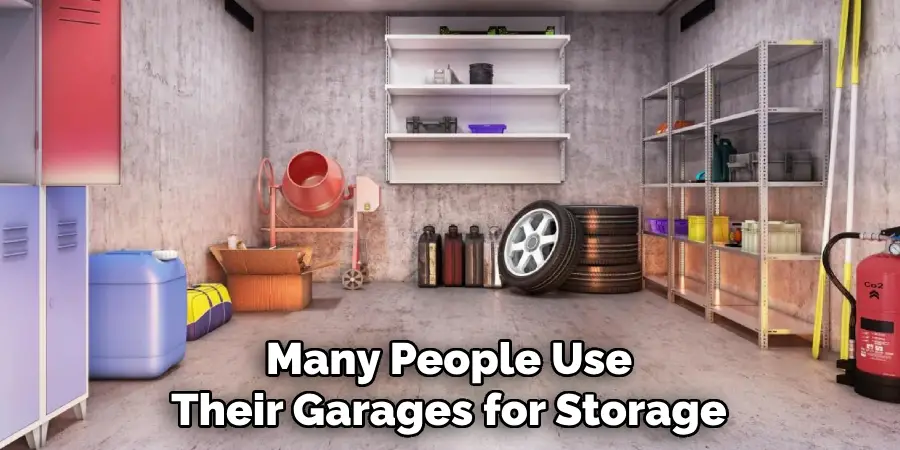
6. Increase Home Value
If you plan on selling your home in the future, having waterproofed walls in the garage can increase its value and appeal to potential buyers. This is especially important if you live in a region with high humidity levels or frequent rain.
Common Mistakes While Waterproofing Drywall in Garage
1. Not Properly Sealing Cracks and Gaps
As mentioned earlier, one of the key steps in waterproofing drywall in a garage is to seal any cracks or gaps with caulk. Neglecting this step can result in water seeping through and causing damage.
2. Using the Wrong Waterproofing Products
It is important to use products specifically designed for high humidity areas when waterproofing in a garage. Using regular paint or sealant may not provide adequate protection against moisture.
3. Not Allowing Enough Drying Time
When applying waterproofing products, it is essential to follow the recommended drying time before adding another layer or painting over it. Rushing this step can compromise the effectiveness of the waterproofing.
4. Applying Too Many Layers
It may be tempting to add extra layers of waterproofing for added protection, but this can actually have the opposite effect. Applying too many layers can create a barrier that traps moisture inside, causing damage over time.
5. Not Maintaining Proper Ventilation
Proper ventilation is crucial in reducing humidity levels in a garage. Failing to maintain proper ventilation can lead to moisture buildup and negate the effects of waterproofing.
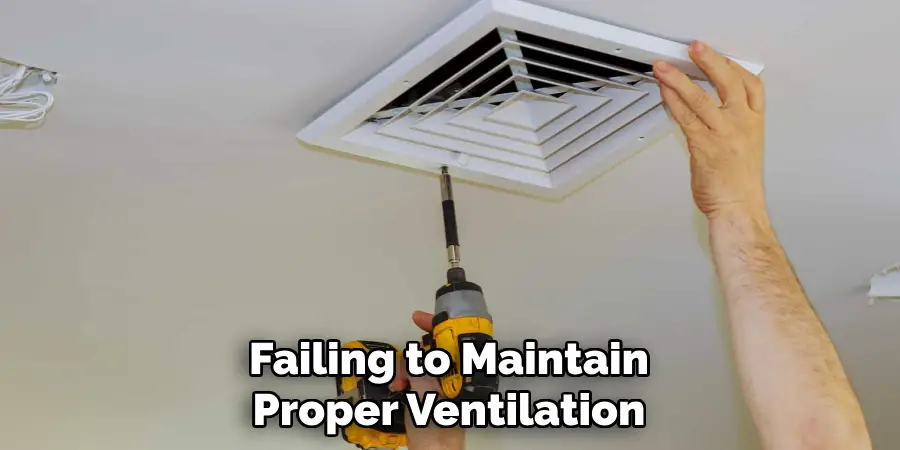
6. Not Addressing Underlying Issues
Waterproofing may provide a temporary solution for moisture issues in a garage, but it is important to also address any underlying issues such as drainage problems or leaks that are causing the excess moisture. Ignoring these issues can lead to further damage down the line.
Will Waterproofing Your Garage Drywall Help Prevent Any Potential Water Damage?
Waterproofing your garage drywall can definitely help prevent potential water damage. As mentioned earlier, garages tend to have higher humidity levels and are exposed to outdoor elements such as rain and snow. This makes them more prone to moisture buildup and water damage compared to other areas of the house.
By waterproofing your garage drywall, you are essentially creating a barrier that prevents water from seeping through and causing damage. This can help prolong the lifespan of your drywall and prevent costly repairs in the future.
Moreover, waterproofing also helps to maintain the structural integrity of your garage walls. Moisture that seeps into drywall can lead to mold growth, which can weaken the structure and potentially compromise its stability.
By properly waterproofing your garage drywall, you are adding an extra layer of protection against moisture and mold growth. This can also be beneficial for any items stored in the garage, as they will be protected from potential water damage as well.
Are There Any Long-term Maintenance Tasks You Should Be Aware of After Waterproofing the Drywall in Your Garage?
Once you’ve successfully waterproofed your garage drywall, there are a few long-term maintenance tasks you should be aware of to ensure continued protection. Firstly, it’s essential to regularly inspect the drywall for any signs of damage or water intrusion. This can include checking for discoloration, soft spots, or musty odors.
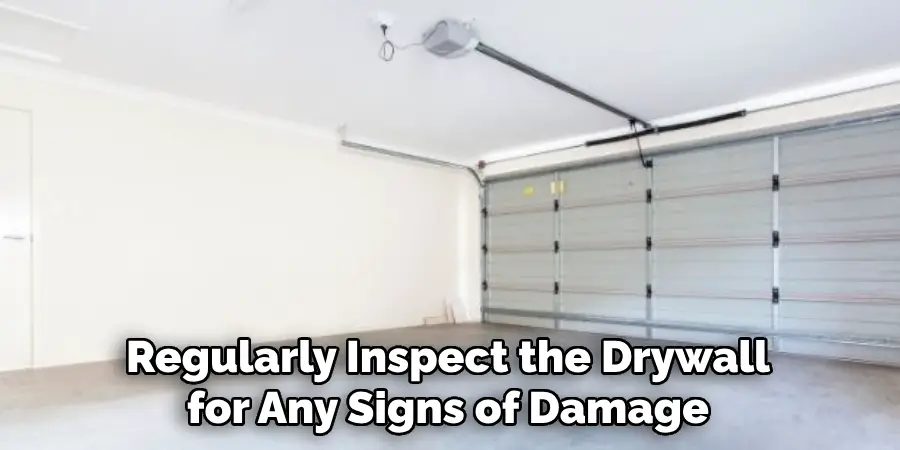
In addition to regular inspections, it’s also essential to keep an eye on the humidity levels in your garage. Excessive moisture can still enter through other areas, such as doors or windows, and potentially damage your drywall. Consider investing in a dehumidifier or ensuring proper ventilation to reduce humidity levels.
Conclusion
While waterproofing drywall in your garage can provide many benefits, there are also some potential disadvantages to consider. Some of these include the time and effort required for proper preparation and application, as well as the cost of materials.
In conclusion, learning of waterproof drywall in garage is an essential skill for any homeowner or DIY enthusiast. Not only does it protect your walls and maintain the structural integrity of your garage, but it also improves the overall appearance and cleanliness of the space.
However, as with any home improvement project, there are a few disadvantages to consider when waterproofing drywall in your garage. These include the time and effort required, as well as the cost of materials and potential for mistakes. I hope this article has been beneficial for learning how to waterproof drywall in garage. Make Sure the precautionary measures are followed chronologically.
I am Rick. I grew up helping my dad with his handyman service. I learned a lot from him about how to fix things, and also about how to work hard and take care of business. These days, I’m still into fixing things- only now, I’m doing it for a living.
I’m always looking for new ways to help people grow and develop. That’s why I have created this blog to share all my experience and knowledge so
that I can help people who are interested in DIY repair.

